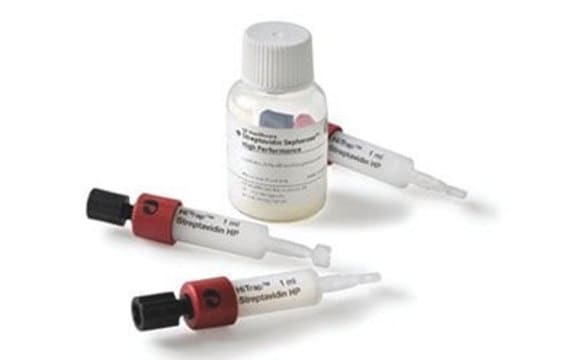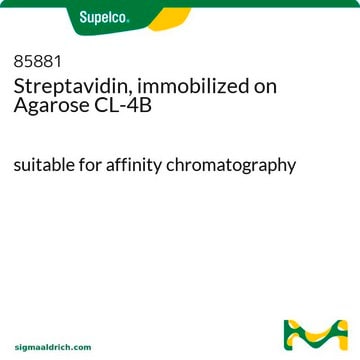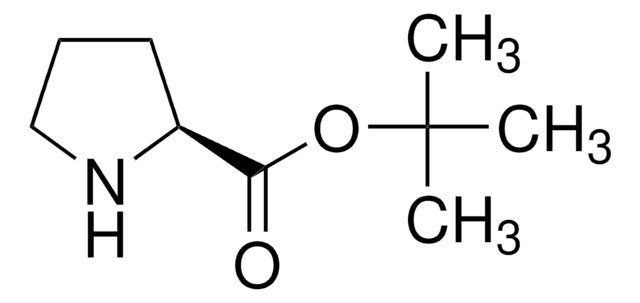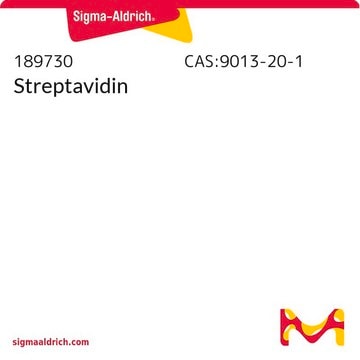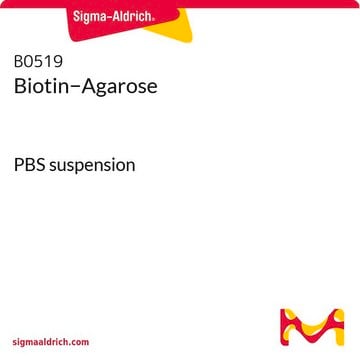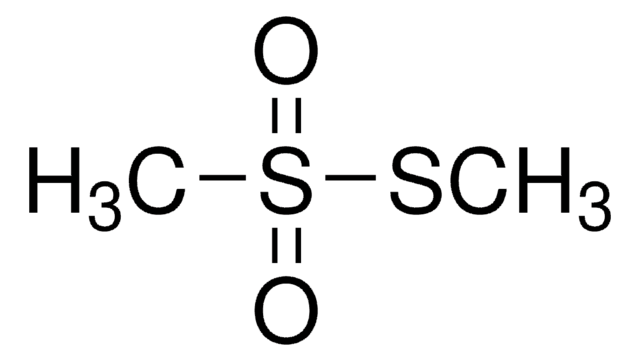S1638
Streptavidin−Agarose from Streptomyces avidinii
buffered aqueous suspension
Synonym(s):
streptavidin agarose beads, streptavidin agarose resin
About This Item
Recommended Products
form
buffered aqueous suspension
extent of labeling
≥1 mg per mL
technique(s)
affinity chromatography: suitable
matrix
4% beaded agarose
matrix activation
cyanogen bromide
matrix attachment
amino
matrix spacer
7 atoms
capacity
≥15 μg/mL binding capacity (biotin)
storage temp.
2-8°C
Application
- to pull down biotinylated cell surface proteins during the quantification of plasma membrane transforming growth factor β (TGFβ) receptor II (TβRII) and Tβ
- RII internalization
- in biotinylated miRNA pull-down assay; as secondary antibodies in immunoprecipitation
Biochem/physiol Actions
Physical form
Storage Class Code
10 - Combustible liquids
Flash Point(F)
Not applicable
Flash Point(C)
Not applicable
Certificates of Analysis (COA)
Search for Certificates of Analysis (COA) by entering the products Lot/Batch Number. Lot and Batch Numbers can be found on a product’s label following the words ‘Lot’ or ‘Batch’.
Already Own This Product?
Find documentation for the products that you have recently purchased in the Document Library.
Customers Also Viewed
Related Content
Investigate in vitro protein-protein interactions with pull-down assays, utilizing affinity, GST pull-down, TAP, and co-immunoprecipitation methods.
Investigate in vitro protein-protein interactions with pull-down assays, utilizing affinity, GST pull-down, TAP, and co-immunoprecipitation methods.
Investigate in vitro protein-protein interactions with pull-down assays, utilizing affinity, GST pull-down, TAP, and co-immunoprecipitation methods.
Investigate in vitro protein-protein interactions with pull-down assays, utilizing affinity, GST pull-down, TAP, and co-immunoprecipitation methods.
Our team of scientists has experience in all areas of research including Life Science, Material Science, Chemical Synthesis, Chromatography, Analytical and many others.
Contact Technical Service

